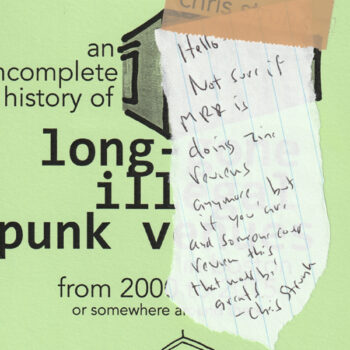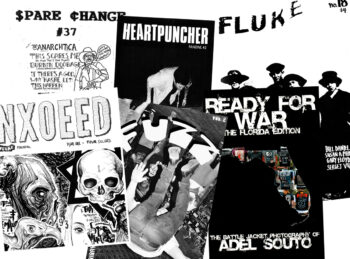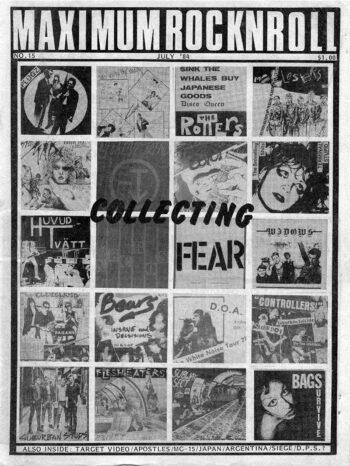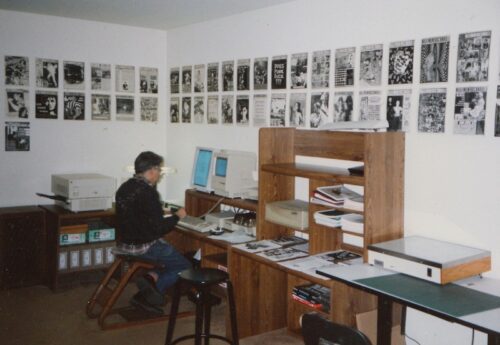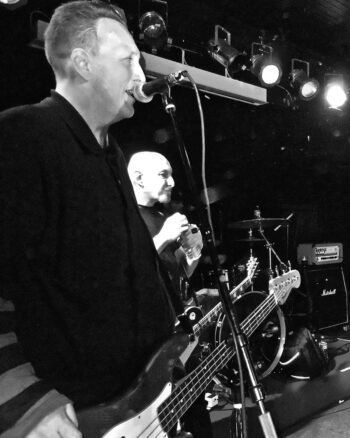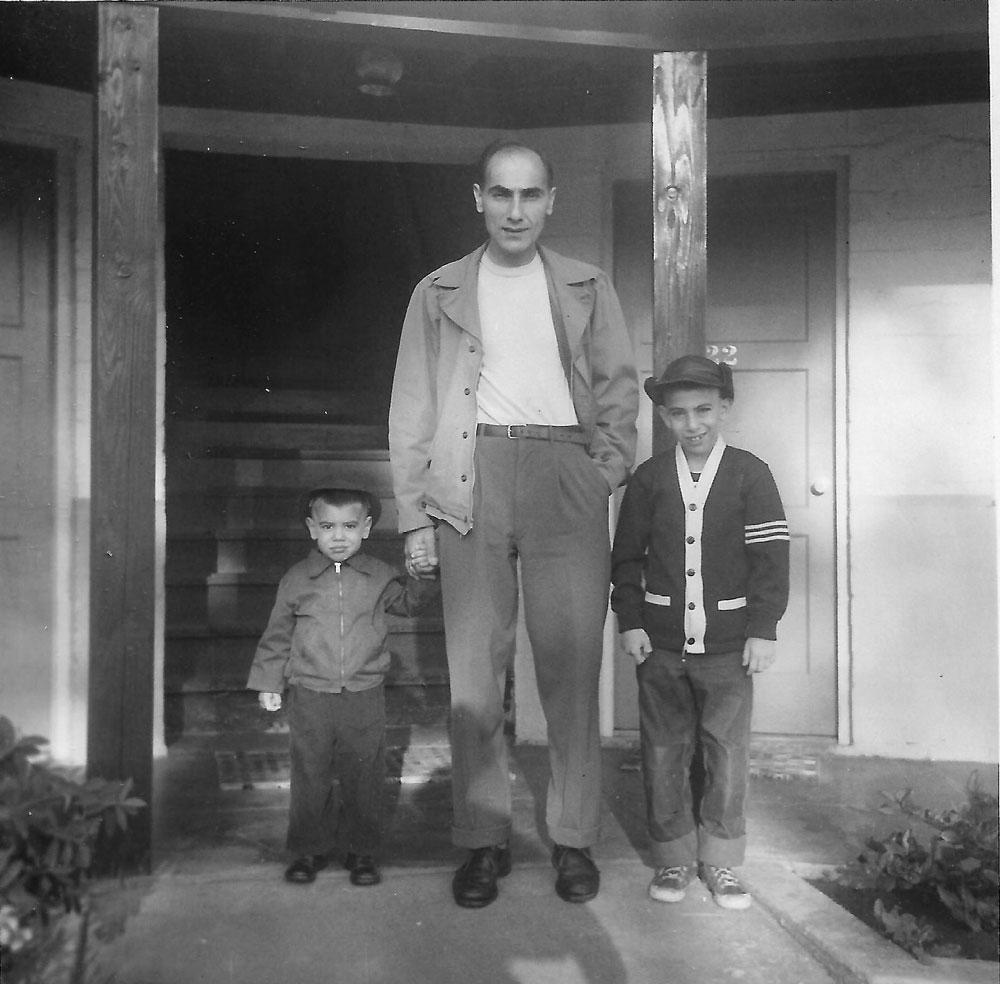Read a Book! Valerie Solanas: The Defiant Life of the Woman Who Wrote SCUM (and Shot Andy Warhol)

Valerie Solanas: The Defiant Life of the Woman Who Wrote SCUM (and Shot Andy Warhol)
Breanne Fahs
The Feminist Press
Review by E. Conner in MRR #380
Valerie Solanas is a strange cultural icon. She is perhaps most often used as a derogatory warning for young women: “the wrong kind of feminist.” In an age of combating #womenagainstfeminism with cupcakey bullshit and Kathleen Hanna documentaries, this lack of historical accuracy and nuance is detrimental. We require Valerie to be represented as what she truly was: a fiercely intellectual militant feminist who died poor and alone because this world kills people like that.
Personally, Valerie is of interest to me in charting these people, the controversial, difficult women that are forgotten and discarded. Even among them Valerie is not alone is her abandonment. The great failures are Valerie Solanas, Lee Lozano and Shulamith Firestone. All attempted to straddle art and politics, all chose madness and obscurity in lieu of becoming washed out in the limelight. Nuts to the Steinems!
In April I visited New York City and was lucky enough to attend a release event at NYU for this book. An intimidating panel included Avital Ronell, Lisa Duggan, Karen Finley and the author, Breanne Fahs. As the panel went on I slowly realized what was happening. I was in a room full of (mostly) beautiful, smart women repeating the word “shit” over and over. I like to think this was the utopia Valerie imagined so long ago.
I understand that in even articulating that idea I’m doing exactly what everyone has ever done to Valerie’s work. I project my own desires into the intricate complications of her life, art and work. We exist in this place where refining women (and other complicated people) into flattened figures is the norm. Is it even possible to tell a story of history in a way that isn’t problematic? It’s so riddled with the afflictions of opinion and memory failure.
Fahs is a delicate biographer. She fills in nuance without betraying the subject. She’s compassionate and holistic. What is produced feels dense. While it’s not a totally critical history, it is one that demands an active participant. The story of Valerie’s years in New York’s Lower East Side, culminating in her infamous act, are bookended by the brutal years that created and destroyed the human being. It’s perhaps not fair to conceptualize a human life as a flickering light with a crescendo.
When one regards the tragedy of Solanas’s life it’s too easy to conjure pity and rely on that as some accurate representation of her total legacy. The truth is Valerie saved us. She undeniably produced a cultural crack-up. The burgeoning feminist consciousness raising movement would have been nothing without her. While so much organization was vulcanized at the time of her arrest, theory too owes her a great debt. Shulamith Firestone’s conceptualized “Smile Strike,” from the far more validated The Dialectic of Sex was preceded by Solanas’ call for the death of niceness. Modern theoretical feminism and queer theory still look towards SCUM for guidance. Kathi Weeks’ “non-work” recalls Valerie’s “un-working.” Sara Ahmed’s “feminist killjoy” and Lauren Berlant and Lee Edelman’s beckoning towards an academically sanctioned queer nihilism all have foundations in SCUM.
There has been a tendency to regard Valerie as an accident. She is often removed or distanced from revisionist feminist history. While it’s true that she never did fit in with the publicized movement, she does not deserve to be forgotten. Valerie was as much of a disruption to the slide into co-opting radical feminism towards liberal reformism, or as it’s been suggested, just a disruption in general. Her personal effect on the lives of some of the most cherished minds of this movement is not to be undermined. The correspondence with and testimony of Ti-Grace Atkinson, Roxanne Dunbar-Ortiz, Florence Kennedy, Shulamith Firestone and Robin Morgan are all included, finally cementing Solanas in her place among them.
A legacy like this deserves a considerate articulation. Fahs took ten years to write the book Valerie swore she’d write herself. This kind of care for Solanas’ life is uncommonly kind when you consider the treatment Valerie’s work received the second anyone else got their hands on it. All of it has been stolen, lost, edited, misspelled, withheld, hidden, and destroyed.
Even now, the bulk of Valerie’s surviving work (SCUM Manifesto) is printed and distributed largely by the anarchist-publishing house AK Press. Every few years another edition comes out with another forward written by a different person. The most recent edition touts notorious Marilyn Manson fan Michelle Tea’s take on the manifesto. Ms. Tea, once a young radical dyke poet, is now the editor of a popular hipster motherhood blog. While the lesbian mother could be one interpretation of Valerie’s demand for “complete automation” it still feels something like failure. And where does the money go?
Valerie Solanas is an attempt to map the great sources of the paranoia that were Valerie’s downfall. Like any young woman, her sexuality and psychic body were mangled early on. Part of the map of Valerie’s life is strongly situated in the way she defined and declared her vision. Fahs uses Valerie’s own words whenever possible. It’s rather exciting for any Solanas fans out there to get to eek whatever they can out of the quotes from Up Your Ass, various interviews, college newspaper articles, and correspondence that Fahs had access to.
These kinds of considerations are partly due to Fahs’ background in Feminist Studies and Psychology, a very important distinction in the overall tone of the book. Fahs is careful to include the reputation and conditions of not only the institutions that Valerie landed in after shooting Andy Warhol, but critically traces her movements through schools, the hospitals where she gave birth to at least two children, residential hotels, jail cells, collective meetings, diners and beds. You see this complicated figure moving about truly alive and conscious, wading through the same shit as all of us.
I finished the book on the train headed to work. I got off two stops early and rode my bike to the place Valerie died. Alone in a hotel room (and never wanted once) for at least five days. The front of the Bristol Hotel is collaged with handwritten notes regarding hotel policies and notes to UPS drivers. A historical site plaque bulges from the wall. It neglects to mention the two most famous residents, Valerie and Richard Ramirez, aka the “Night Stalker,” notorious serial killer/rapist and Satanist.


